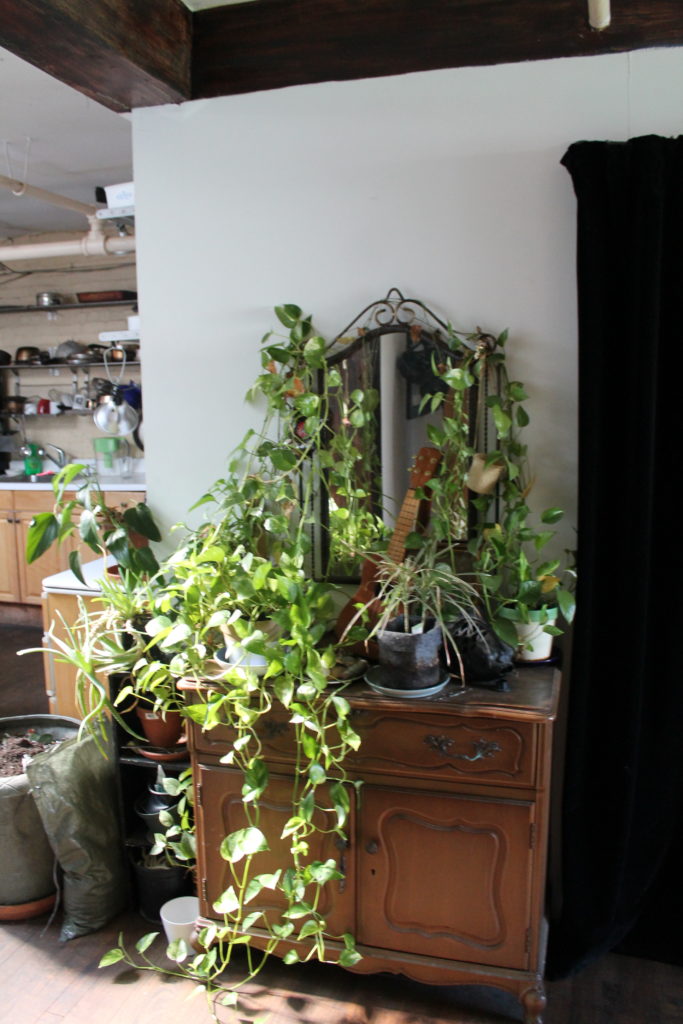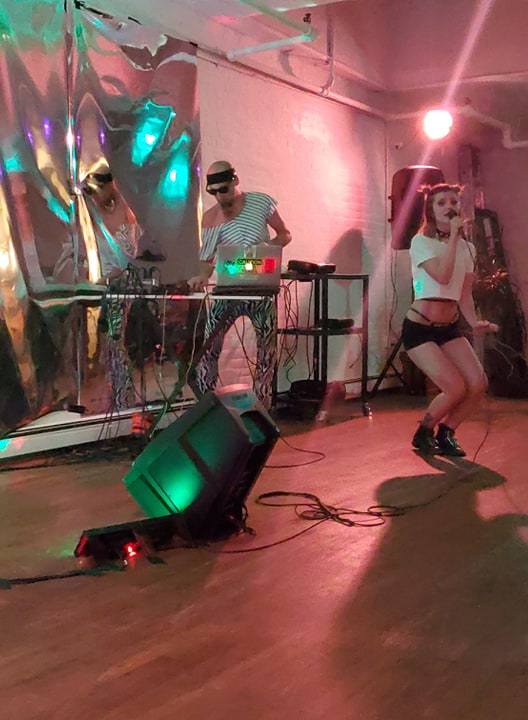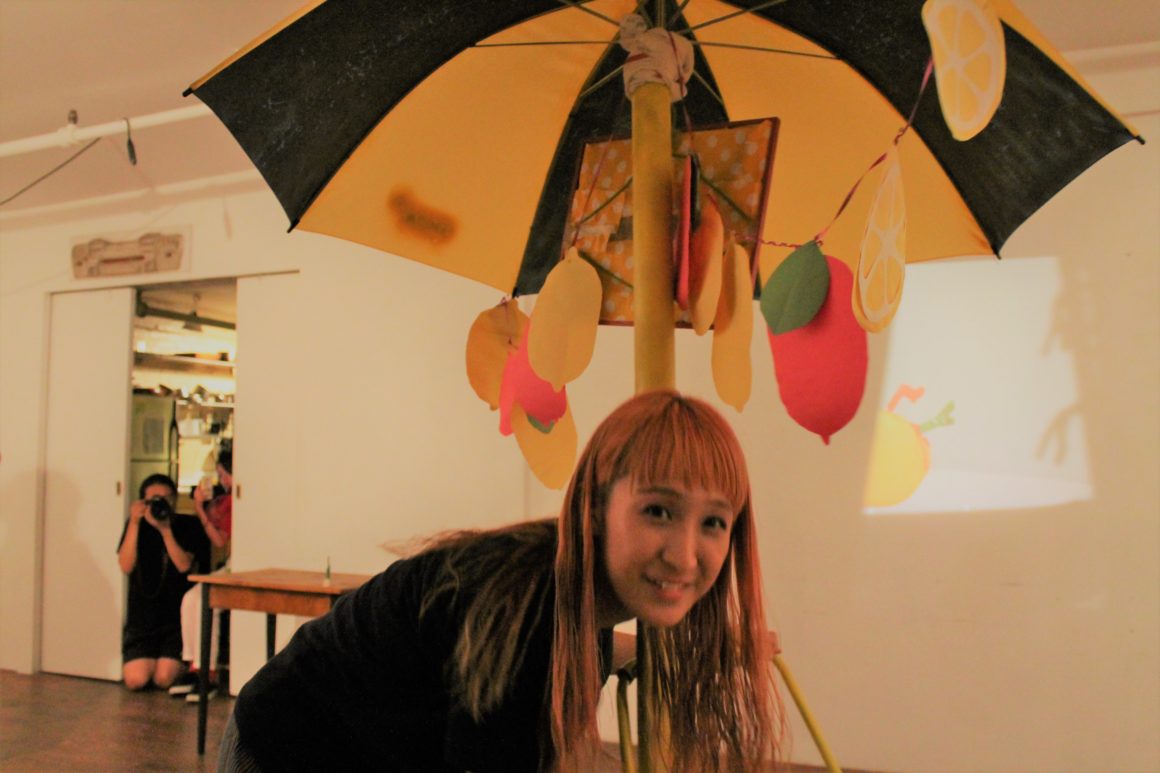Laura Arena did not exactly have a vision when she founded DE-CONSTRUKT— a studio space, event space, and artist residency based in Red Hook. She did it, she says, out of necessity because nothing else like it existed.

Artists at DE-CONSTRUKT often work on multidisciplinary projects and can incorporate a variety of mediums like spoken word, music, or dance into their work. DE-CONSTRUKT’S residency program can host three artists at a time. Most are international.
Arena says she strives to choose artists that are specifically interested in Red Hook. She said that some artists are inspired by Red Hook’s history, others in economic issues in the area, or the aftermath of Hurricane Sandy, which devastated the neighborhood for years after the storm hit in 2012.
“I encourage artists to be out on the street,” Arena said. “There are some artists that have projects where they are walking down Van Brunt, or they are going to the parks or organizations.”
Currently, a two-time resident—a filmmaker and interdisciplinary artist named Miranda Bellamy, originally from New Zealand—is exploring Red Hook plant life in shrinking spaces, such as sidewalk cracks. “We are giving voice to those plants as a metaphor for the social resistance that aspects of the Red Hook community have towards the increased urbanization of the area,” she said.

The Brooklyn Ink
Most artists stay in residency for about one month, but some, like Maia Radanovic, who is originally from Serbia, enjoyed their residencies so much that they decided to move to Red Hook for good. Radanovic said she is deeply drawn to the neighborhood. “I don’t know how to explain it,” she said. “It is the energy of this place. It is how the residency worked, how it’s connected to the community and the really cool programs here.”
She notes that artists frequently engage directly with the Red Hook community. Many artists participate in the Red Hook Art Project, a nonprofit that provides free art lessons to local kids, according to Radanovic. DE-CONSTRUKT also hosts monthly “Din Dins,” that are open to everyone. These “community dinners for creatives” are some of DE-CONSTRUKT’S most popular events, and they offer artists and community members an opportunity to connect intimately, around the table, over a potluck dinner. An artist in residency usually hosts the event and selects a theme. Short films were screened at the most recent Sunday night dinner.
In addition to community engagement, DE-CONSTRUKT is also dedicated to hosting diverse artists. “I am very supportive of communities that don’t have outlets,” Arena said. “They tend to be communities that are more experimental, or communities of different minority groups, or LGBTQ groups, things like this.”
Such a goal seems especially important given that many art spaces lack diversity. A study conducted by ArtNet, an art market information site, found that only 11 percent of all museum acquisitions and 4 percent of exhibitions were made up of work by female artists; the survey, which included 26 “prominent American museums,” spanned 2008 to 2018. The survey also found that in the 30 museums researchers examined, only 7.6 percent of exhibitions were the work of African American artists.
Arena says she also strives to offer opportunities to artists who do not fit into a traditional gallery space, or who do not have extensive experience. “A lot of galleries want to see a resume and a track record, and sometimes you haven’t done what you
want to do,” Arena said. “That’s because it’s new and innovative.”

Additionally, DE-CONSTRUKT often better fits what many artists want from a performance space. Avant-garde artist MágNe Tá, based in Bushwick, has performed in museums spaces, but said that the energy at DE-CONSTRUKT can be more desirable. A museum, the artist says, “It can feel more like you are performing at a mausoleum or something. It’s kind of detached in a way just because it’s so intimidating. Here it’s kind of the opposite.”
Despite offering diverse art and efforts to engage the community, DE-CONSTRUKT still struggles to maintain a consistent audience. Event attendance varies. Some events have up to 80 people but they often have closer to 10 or 20 people in
attendance, according to Arena. DE-CONSTRUKT’S location, without a storefront, might contribute to lower
attendance. Red Hook can be difficult to get to, especially if bus service is interrupted. One visitor, Steve Bookman, reflected on his long commute. “I really cared enough to make heroic efforts to get here,” he said. “But, I don’t think many people
would.”
The studio has also yet to reach a significant part of the Red Hook community right next door: those who live in the Red Hook Houses, Brooklyn’s largest New York City Housing Authority development, where more than 6,000 people live.
“Our doors are open,” Radanovic said. “But we literally need to go there and grab them somehow.”

Arena, a multidisciplinary artist herself, also helps run an artist residency in Catalonia, Spain and is hoping to open one in Armenia. Although she has lived in numerous residencies around the world, she says she still believes that DE-CONSTRUKT is a rare and special place.
“The reason that we are challenged is also why our space is so special,” she said. “We are a hidden space. We have a special combination where people get to live, and work, and have people around them. People really have to want to find us.”


Leave a Reply